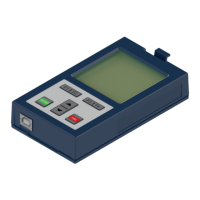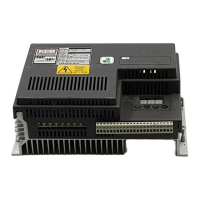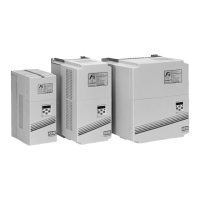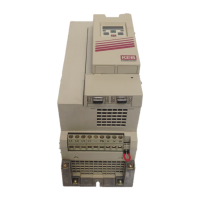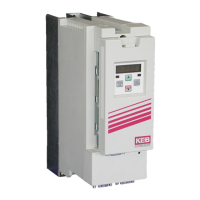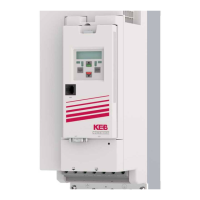The length of the motor pole pair from the previous example is 70 mm and the
measuring step is 20 µm. I.e. if a whole motor pole pair is passed through, the po-
sition changes by the value 70 mm / 0.02 mm = 3500.
3500 is entered in parameter ec50.
Since the ratio 70 mm / 0.02 mm is already an integer, this already results in a min-
imum possible number of pole pairs of 1.
Operation of non-absolute linear encoders (with and without reference marks))
In principle, the evaluation of non-absolute linear encoders with incremental signals
is largely the same as that of non-absolute rotary encoders. The main difference is
the calculation of the position of the zero signal in ec31.
Devices with sinusoidal 1Vpp and square-wave incremental signals are also evalu-
ated in the same way.
The detection of the encoder type and the calculation of the position of the zero
signal of the first procedure is the same as for rotary incremental encoders with ref-
erence marks/zero signals. The values for the detected encoder type in ec17 and
the possible error messages in ec01 are correspondingly the same.
6.1.8.1 With periodic reference marks
Here the linear encoder has several reference marks with the same distance to
each other. How many periods of the incremental signals are between the refer-
ence marks is set in ec29 "signal periods per revolution".
A special case of this is when there is only one reference mark on the travel path.
Then min. one higher value of signal periods is set in ec29 than half of the signal
periods which are on the distance.
Example:
A linear encoder is 540 mm long and a signal period is 20 µm. Then there are 540
mm / 0.02 mm = 27000 periods over the entire travel path, i.e. at least 13500 must
be set in ec29.
As long as a second zero signal is not passed or only the same one is passed, the
detected encoder type ec17 remains at 1 "encoder identification running", i.e. even
if there is only one zero signal on the travel path. Apart from this display, this has
no further effects. All monitorings are already running.
If no zero signal has passed by three revolutions (3 x ec29) after switching on, er-
ror ec01 = 113 "Sin/Cos: no reference detected", or 125 "TTL: no reference mark
detected“ is triggered.
6.1.8.2 With distance-coded reference marks
For distance-coded reference marks, the reference mark track consists of many
reference marks that all have a different distance from each other. From these dis-
tances, the absolute reference can be calculated if two adjacent reference marks
have been passed.
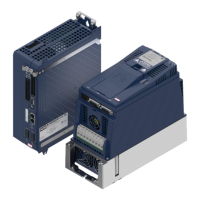
